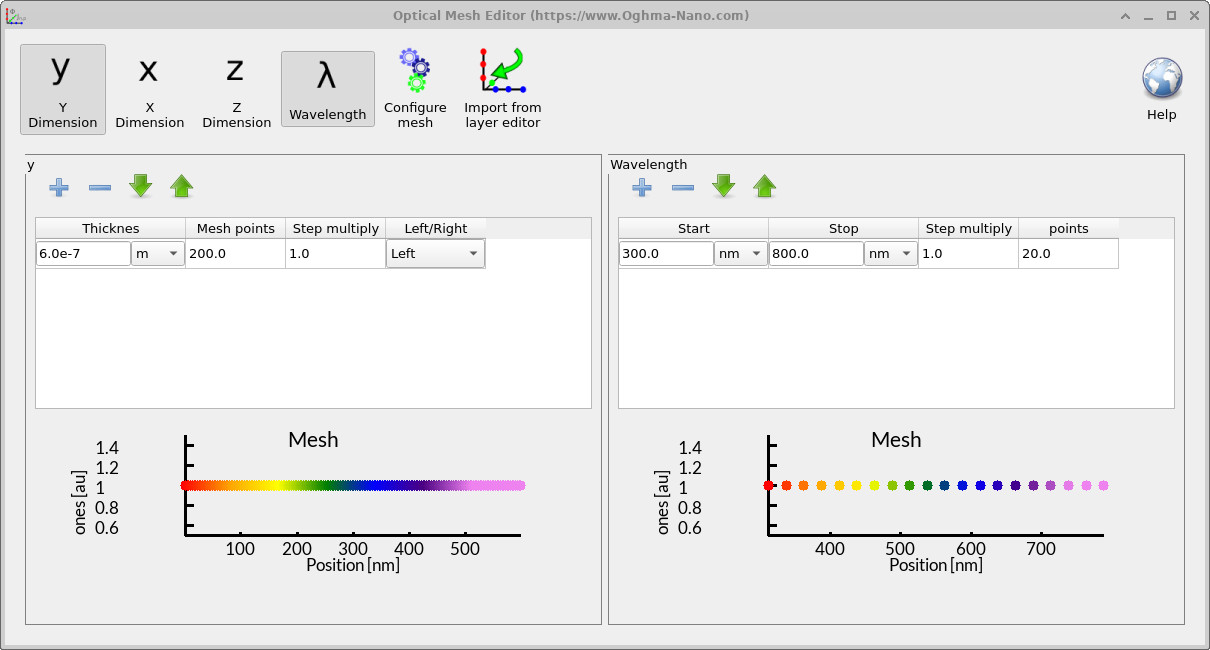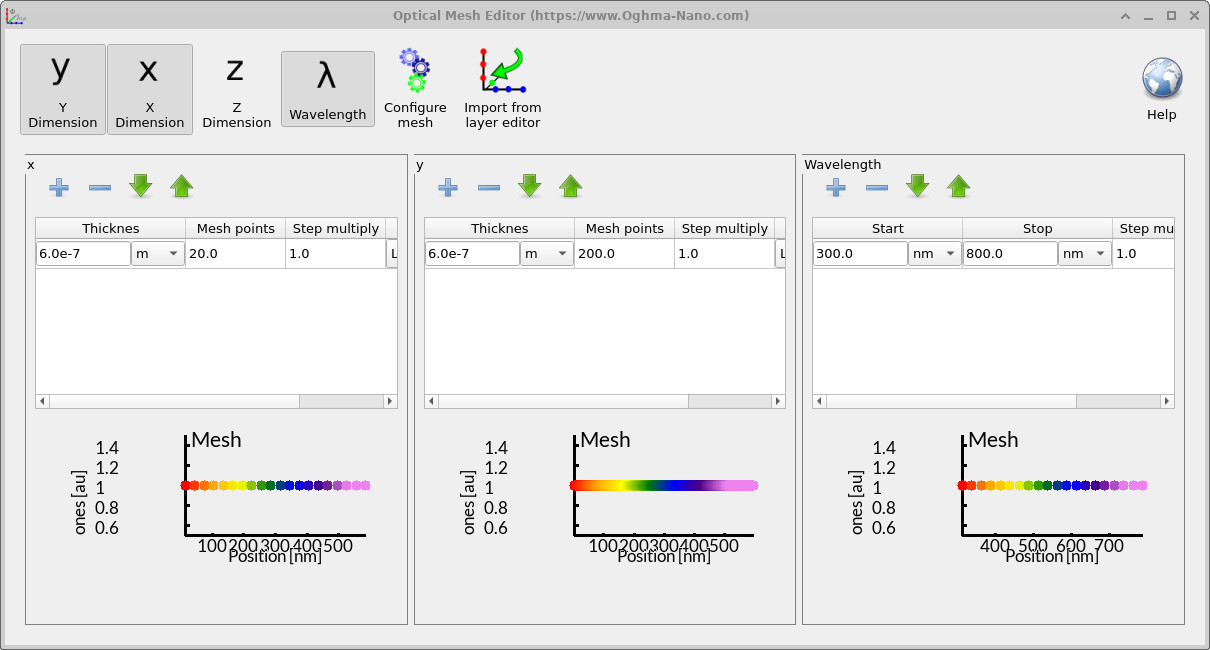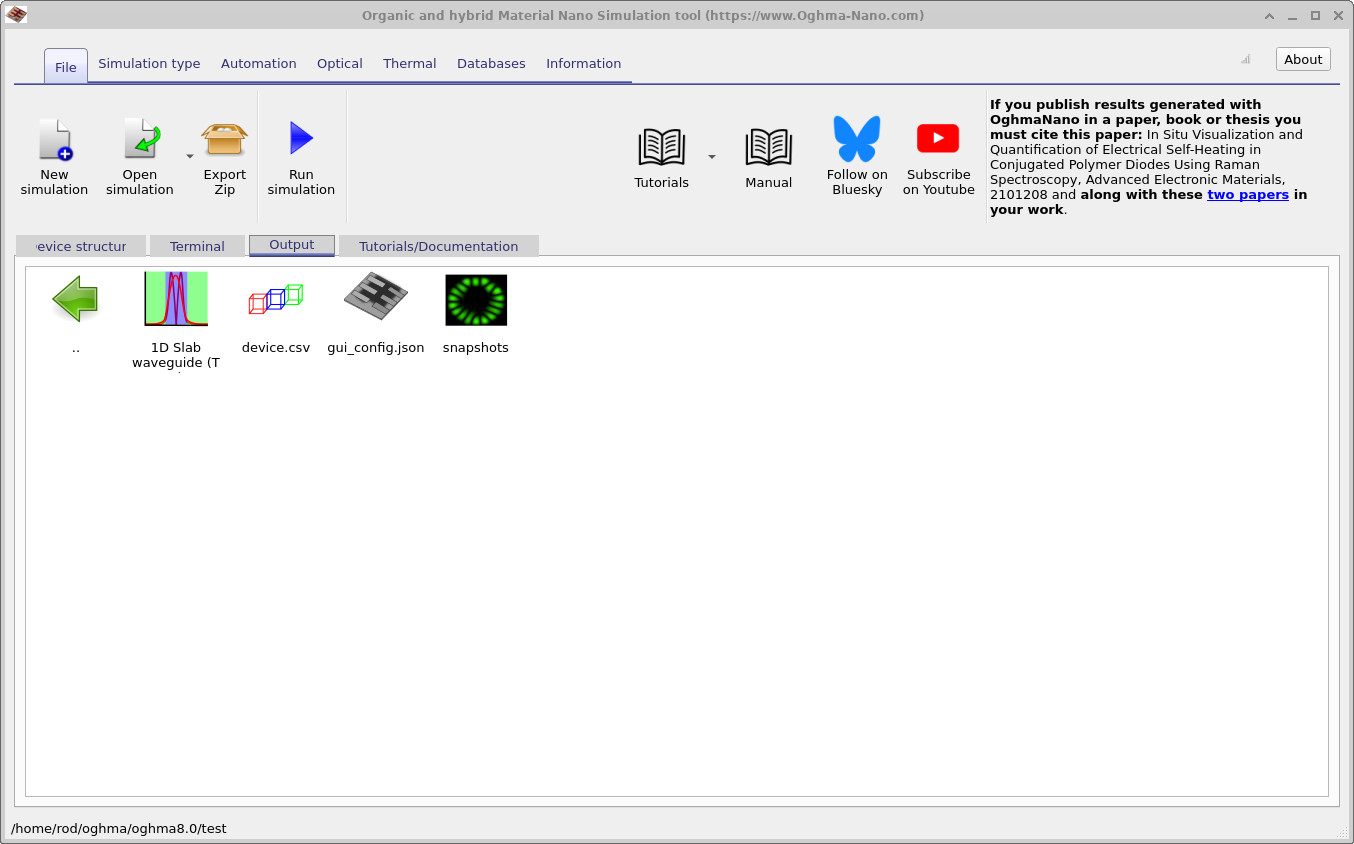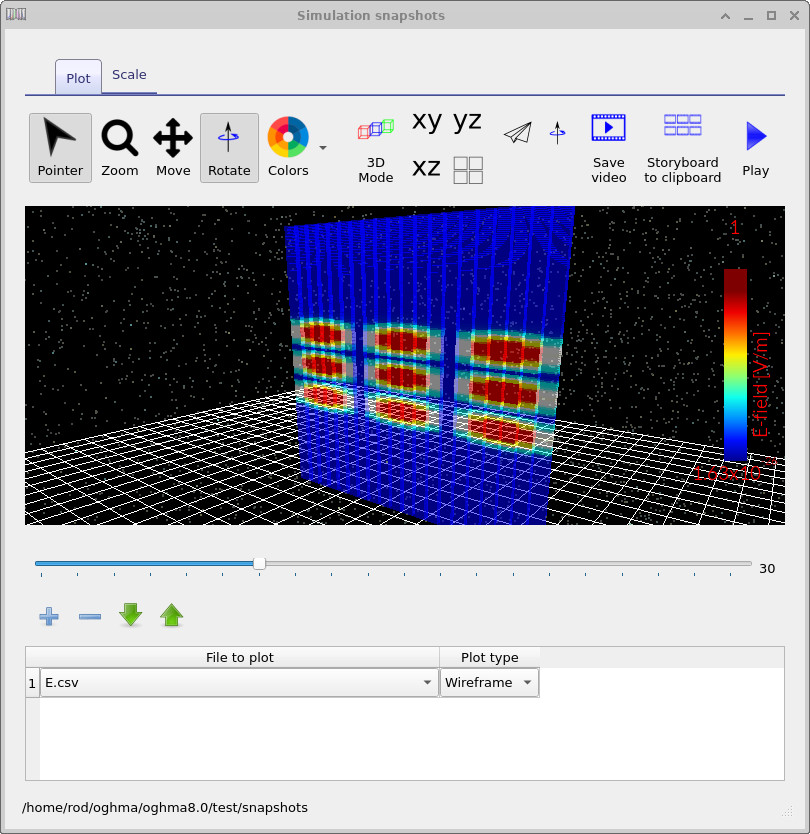Slab waveguide mode solver
In this tutorial we compute the optical modes supported by slab waveguide structures in OghmaNano. We begin with a classic 1D three-layer stack (low-n / high-n core / low-n) and find transverse electric (TE) and transverse magnetic (TM) modes. We then extend to 2D mode searches with configurable mesh density and wavelength sampling, and show how to control the number of eigenmodes solved in the X and Y directions.



1. Getting started: 1D slab (TE)
Open New simulation → Mode solvers and select the 1D slab waveguide example. Configure the layer stack (e.g., 500 nm / 500 nm / 500 nm) and refractive indices (n = 1 / 4 / 1 for cladding / core / cladding in this example). Set polarization to Transverse electric (TE).


👉 Next step: Now continue to Part C for a more detailed OPV tutorial, including outputs, device layers, and advanced analysis.